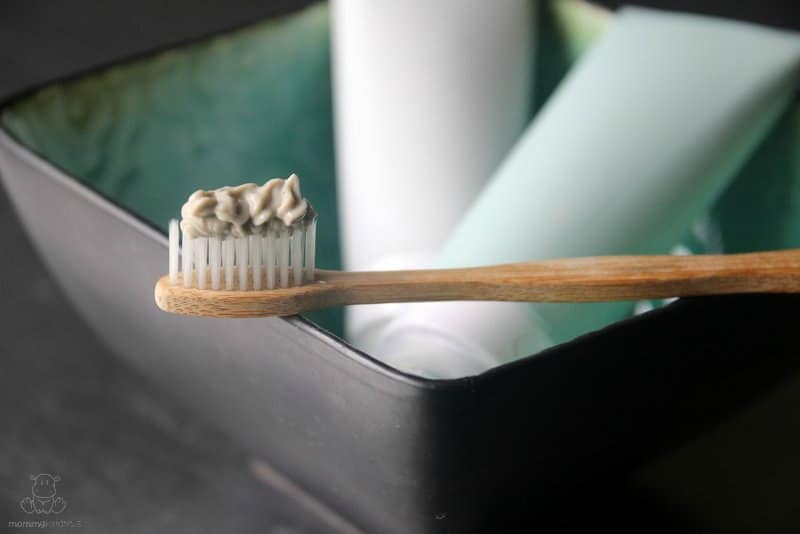
Do you know what happens when you send a three year old in to get his toothbrush ready with this tooth powder recipe? It “snows” in your bathroom, and not in a way that makes you want to belt out Little Drummer Boy and sip hot apple cider.
A few months ago – after it snowed one too many times – I decided to convert the powder into homemade toothpaste, and I’m so glad I did! I love the way it leaves my mouth feeling, and how easy it is to use.
Why make your own toothpaste?
Because many store-bought toothpastes – even some of the “natural” ones – contain IQ lowering fluoride and other unwanted additives. One brand also still contains Triclosan, a hormone disrupting chemical that has been banned in soaps. (source)
Making your own means you can skip all that stuff, and it only takes a few minutes.
Don’t want to DIY?
Cool. Sometimes the right call is to NOT make everything from scratch so you have time for something else. If that’s you right now, this is a wonderful pre-made option that uses the same basic ingredients as my recipe, and none of the stuff we want to avoid.
Then again, sometimes conversations like this are fun, too:
Life: You can’t put the toothpaste back in the tube, and you definitely can’t make toothpaste.
You: Hold my kombucha.”
Either way is awesome, so choose your own adventure.
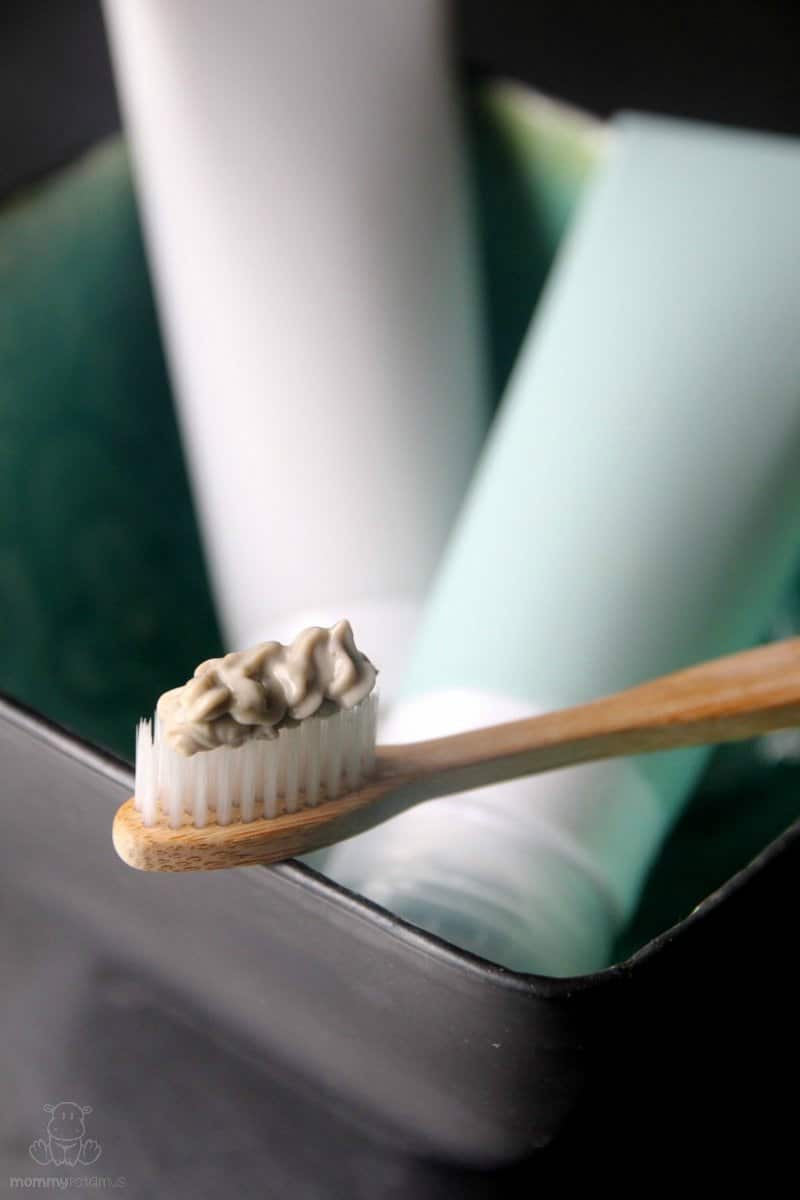
Homemade Toothpaste Recipe
This recipe makes about 2.5 ounces, which will fit in one of these silicone tubes or a small mason jar.
Ingredients
- 4 level tablespoons bentonite clay (this is what I use)
- 2 teaspoons baking soda – optional)
- 1/4 teaspoon sea salt (find it here)
- 1/4 teaspoon activated charcoal – optional but helpful for whitening teeth naturally (find it here)
- enough distilled water to make a toothpaste like consistency (I used 10 tablespoons)
- 10-15 drops spearmint essential oil (find it here)
- 15-20 drops stevia extract or whole leaf tincture – optional (find stevia extract here, find whole leaf tincture here)
To Make
In a pint-sized mason jar, add bentonite clay, baking soda, salt, activated charcoal (if using) and spearmint essential oil. Mix together until spearmint essential oil is evenly distributed, then add a few tablespoons of water and stevia and stir until it has reached the consistency you prefer. To make it extra smooth with no lumps, I mix mine together and then blend it with an immersion blender for a few seconds.
To Use
Brush as you would with regular toothpaste. It won’t foam like the stuff that contains sodium lauryl sulfate, but your mouth will feel amazingly clean afterwards. Follow with homemade mouthwash if desired.
FREE Ebook: DIY Body Care Gifts Made Simple
Do you want to give gorgeous, handcrafted gifts for family and friends, without spending a bunch of time on them?
Then I’d love to give you a free copy of DIY Body Care Gifts Made Simple – my step-by-step guide to making gorgeous handcrafted gifts without stressing yourself out – as a gift for signing up for my newsletter. I’ll show you how to make vintage labels, luxurious lotion bars, lip balms, sugar scrubs, body sprays and more like a pro. Sign up for my newsletter and you’ll be redirected to the download page immediately!

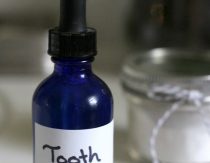
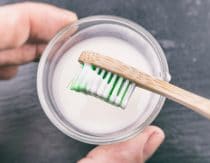
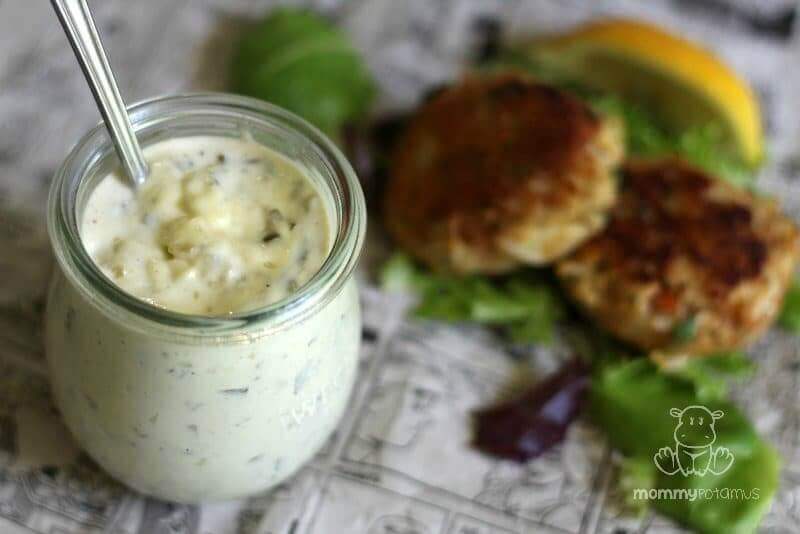

Will your children use this toothpaste? Do they like this or the toothpowder better? Thanks for all the recipes and tutorials! 🙂
Yes, they will! They like both because they taste very similar. I personally prefer the paste because it’s less likely to cause a mess.
Some people tell me their teeth enamel wore down because their dentist told them it is caused by many years of daily brushing with baking soda. I have been trying to switch to DIY natural toothpaste…but I am curious as to how your teeth are doing now that you have been using this homemade toothpaste for a while.
My teeth feel great. No sensitivity and only one cavity in my entire life, which was way back in college when I drank soda. 🙂
Well, that is very good news. I may try homemade toothpaste again, maybe with a bit of soap first.
I keep going back and forth on making toothpaste for my little guy who doesn’t know how to spit yet. So far we’ve just been using coconut oil and cinnamon. Would this recipe be safe for toddler who is learning to brush (minus the essential oils)? And could I use xylitol instead of stevia?
Also… I thought bentonite clay couldn’t come in contact with metal? How does that work using an immersion blender? Maybe I am mistaken?
Stainless steel is fine, but avoid using aluminum 🙂
Can I use somethink other than bentonite clay?
The last ingredient line says “stevia extract or –” Is there another option? Also, is this considered safe to ingest (read: safe for a 3 year old who hasn’t learned to hold and spit)?
It should have said whole leaf tincture. Re: kids – I personally let my kids use it around that age 🙂
Do you have a comparable natural brand toothpaste you would say this compares to? We are currently using Redmond Earth Paste & love it… it would be great to be able to make something like it for my family.
I like some of your recipes, but I am a dentist and I wouldn’t dare to give this to anybody, especially to children. They are so many wrong things with this recipe. Charcoal is a big NO. It makes young teeth look temporarily whiter, it is damaging the enamel, and in the long term make your teeth sensitive and expose the dentin, that is not white. it acts a bit like sandpaper.
The same happens to bentonite clay.
Have you measured the pH of the toothpaste?
Thanks for sharing your thoughts, Heidi! I know there are a lot of opinions out there. My dentist, for example, recommends the clay-based toothpaste I linked to in the post, and in this article a cosmetic dentist recommends using activated charcoal toothpaste every other day for lifting stains: http://www.harpersbazaar.com/beauty/health/advice/a3764/charcoal-toothpaste-pros-cons/
This recipe contains a very small amount of charcoal (one capsule) vs. the higher concentrations you will find in many natural brands. It’s totally optional and can be left out, but I’ve been brushing with charcoal for years and only have good reports from my dentist. 🙂
Is there a specific reason you left out the cinnamon and cloves in the paste version?
Not really, I just prefer spearmint in this recipe 🙂
I have heard that you can “re-mineralize” your teeth. Have you heard of this? I would love to know exactly what that means and if your natural tooth paste/powder can do that. I prefer to avoid the dentist!
My immersion blender is metal, can you use metal with bentonite clay?
Perfect timing! We are almost out of the expensive natural stuff that the grandkids like, and I want to make them a replacement that isn’t as pricey. The youngest doesn’t like anything mint because it is “too spicy” 😉 So I’ll probably use sweet orange, which is his favorite flavor in the expensive store stuff. Question: due to the bentonite clay, do you use only silicone or stainless utensils to mix this? My understanding is that regular “silver”-ware will cause a bad reaction if it comes in contact with bentonite clay. Not sure if that was urban rumor, so thought I’d double-check. Thank you!
how long do you feel comfortable using this before it might harbor bacteria that could be harmful? we love it because it has no toxic ingredients or icky preservatives…but that means things with water don’t last…
How do you keep this from growing mold/bacteria? The recipe looks awesome but there’s nothing in it that would be sufficient in preventing the growth of microorganisms and wet clay harbors them very easily. That’s the one thing that’s always kept me on tooth powder rather than toothpaste even though I’d much prefer the latter. Anything oil based is never the right texture and is awkward with my drain, and anything water based is a giant bacteria magnet 🙁
Based on what I’ve read it is my understanding that hydrated clay is naturally resistant to bacteria: https://www.nature.com/articles/srep19043
My favorite store bought toothpaste is very similar to the recipe above – hydrated clay, a little salt, and some essential oils – and has a shelf life of over a year I believe. 🙂
I made this but it is very watery, nothing like a paste. Is 10 Tablespoons correct?
It may be that the clay is less absorptive than the one I used. I would add a bit more clay 🙂
I agree! I think it should be teaspoons because she states the recipe makes 2.5 oz. which is only 5 Tablespoons. All I have is a watery mess.
Yikes! Thanks for your feedback. I actually did use 10 tablespoons of water. When wet, the clay and water takes up less physical volume than when it’s dry which is how you end up with less than you’d expect, but you’re right that it should be more than 2.5 ounces. I should have caught that, but the silicone tubes I used say they hold 2.8 ounces so I estimated based off the fact that one batch almost filled the tube. I’ve updated the post to say to mix to desired consistency while I recheck the recipe. My guess is that there is some variation between the absorptive capability of different clays, but I’ll test to be sure.
Hi, I love the tooth powder but I’d love to try the paste as well, but I only have powdered whole leaf stevia. Can I use that and how much should I use if I can?
I tried this for the first time and my guns and teeth hurt afterwards. Did i do something wrong and also can you use any essential oil we want ?
I would love to know if anyone else has experienced this as well? It was working great but now my gums hurt and bleed after each brushing. I put everything in the recipe (including the optionals), should I omit something? Only change I make is substituting xylitol for stevia. And I use spearmint essential oil.
I am looking for information about when a natural homemade toothpaste should be introduced to a toddler. My daughter just turned 2.
Thanks.
I made this substituting turmeric powder instead of the stevia (about 1/4 tsp), and peppermint instead of the spearmint. I did not measure the water, but added small amounts until I had the correct consistency. My teeth looked polished when I was done brushing. The were sooo shiny! Even more so than after a dentist appointment.
Hi! I have a quick question, for the bentonite clau, can I use “calcium bentonite (green) clay” instead of the one you use? That is what I hace at home and was wondering if ok or need to buy the Sodium one,
Thank you!
Hi! Is this recipe safe for 14 month olds, as training toothpaste? Thanks so much!
Hi Heather! Thanks for this recipe, I have been looking for one with the activated charcoal for a while. Do you know if instead of Distilled Water you could use Coconut Oil? Thanks!
Hi, Heather – can one substitute Bentonite clay for Diatomaceous Earth?
Hi Ingrid, at the recommendation of my dentist I’ve actually started using baking soda in place of the clay.
Have your tried adding Calcium-Magnesium Power to your homemade tooth paste. I have heard it is good for getting rid of existing small cavities.
I have not. 🙂
Thank you. I would love to try your homemade gift RECIPIES!